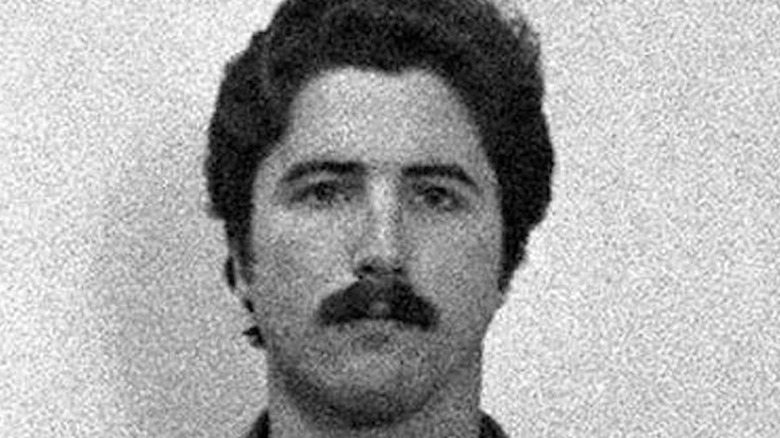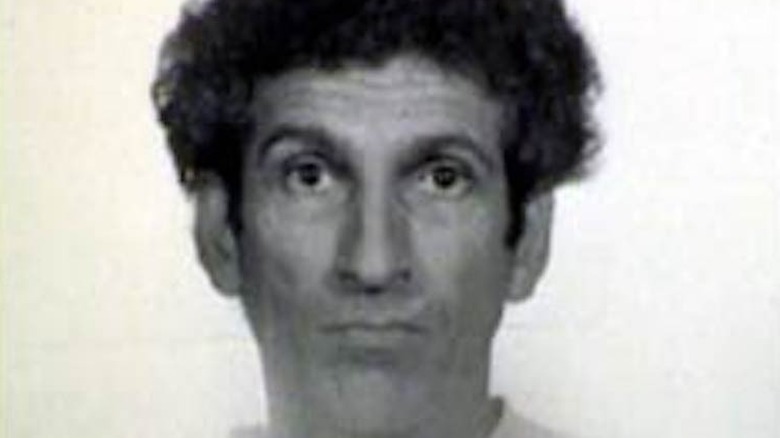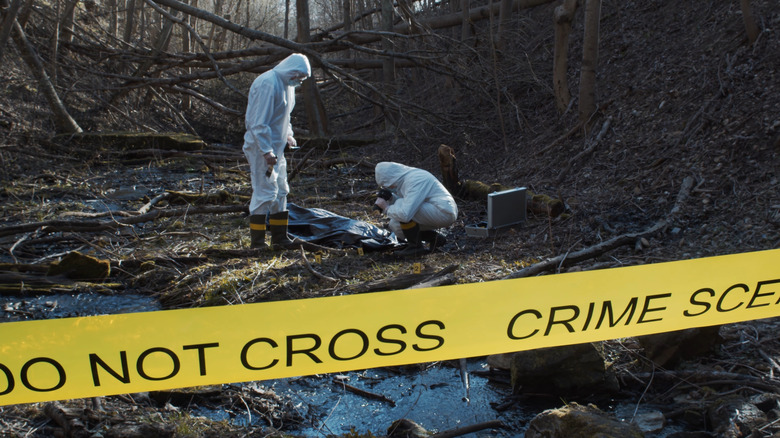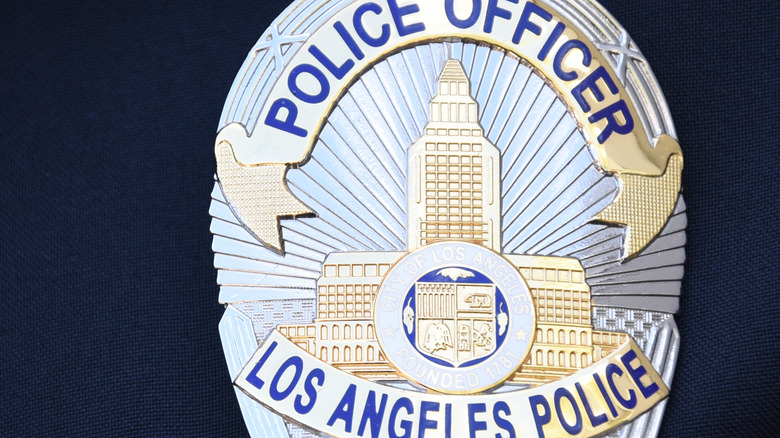The Hillside Strangler Murders Explained
Over a four-month span beginning in October 1977 and ending in February 1978, the Hillside Stranglers — New York-born cousins Kenneth Bianchi and Angelo Buono Jr. — terrorized the streets of Los Angeles, killing a total of 10 girls and women mostly by strangulation (via Murderpedia). Close to one year later, Bianchi murdered another two women in Washington state, and while he and his cousin were eventually brought to justice and sentenced to life in prison, the period in which they committed their crimes remains one of the darkest in L.A. history, one where there was seemingly a new victim found in the hills surrounding the city on a weekly basis.
The nickname given to the serial killer duo does say a lot about the method they preferred when killing their victims, as well as the location where they usually disposed of the bodies. But what were their individual backgrounds prior to the murders, what sent them down such a dark path, and how did they lure their victims to their death? Here's an in-depth explanation of the Hillside Strangler murders and the apparent motivations of the men behind them.
The Hillside Stranglers' troubling background
The first, and younger of the two Hillside Stranglers was a Rochester, New York, native named Kenneth Bianchi, who, as noted by Murderpedia, had a long history of underachievement and a reputation as a compulsive liar and petty thief. After a short-lived marriage and a similarly brief stint in community college, he bounced from odd job to odd job in the early-mid 1970s. By 1975, when he was 24 years old, he decided to move to Los Angeles, where he got acquainted with his adoptive cousin — and as it turned out, fellow Hillside Strangler — Angelo Buono Jr.
Buono (pictured above), who was almost two decades Bianchi's senior, was definitely not an ideal role model for an impressionable young man who was known for his lack of maturity. After spending the first few years of his life in Rochester, Buono and his family moved to Glendale, California, in the late 1930s. From an early age, he showed a lot of contempt toward women, including his own mother, and he spent some time in reform school after being convicted for grand theft auto. Later on, he fathered several children with different mothers and was physically and sexually abusive toward the women he married or dated.
Despite not having much formal education, Buono was supposedly doing well for himself as an auto upholsterer when Bianchi moved to L.A. But instead of using work connections or other legal means to help his younger cousin with his financial woes, the then-41-year-old had different — and much darker — ideas in mind.
Here's why the Hillside Stranglers started killing
Despite not being particularly easy on the eyes, Buono struck a charismatic and confident figure, and young girls were apparently attracted to him. With Bianchi having trouble making his car payments, Buono came up with the idea that they should start working as pimps and recruit some of those girls as sex workers. According to Murderpedia, business was initially good for the two cousins, but when the pair of teenage runaways they recruited were able to escape their clutches, they were forced to go back to square one, and Bianchi's car was repossessed when the money he made from pimping ran out.
Bianchi and Buono sought to expand their reach by purchasing a "trick list" of potential clients from a sex worker named Deborah Noble. In October 1977, Noble and her colleague Yolanda Washington delivered the list to the cousins, but it wasn't long before the cousins realized that the list they paid for was fake all along. Angry over being deceived, Buono and Bianchi weren't sure where to find Noble, but since they knew where Washington plied her trade, they decided to take their revenge on her instead. On October 17, 1977, the pair made Washington their first victim; her body was found one day later near the Forest Lawn Cemetery.
It was exactly two weeks later when another sex worker, a 15-year-old runaway named Judith Lynn Miller, was found dead with similar signs of strangulation on her neck.
The Hillside Stranglers posed as cops to lure their victims
The Hillside Stranglers may have started their murderous rampage by killing a pair of sex workers, but their subsequent victims — all girls and young women — came from less high-risk backgrounds. As Bianchi later explained to investigators (via Murderpedia), their usual modus operandi was to pose as cops, complete with fake badges, in order to lure potential victims to Buono's unmarked police car. This was quite effective with the sex workers they targeted, but when it came to the "nice" girls, it wasn't as easy to convince them to come along for the ride. In almost all cases, the victims were sexually assaulted and strangled to death, their bodies dumped on hillsides northeast of Los Angeles.
The only murders that were carried out in a significantly different manner (save for the actual method) were the ones that took place in Bellingham, Washington, where Bianchi fled to in May 1978 to join his girlfriend and infant son while hiding from the law. Karen Mandic and Diane Wilder were two Western Washington University students whom Bianchi had hired for a house-sitting job, only for him to strangle them and dump their bodies — as well as Mandic's car — in a wooded area near her home.
Bianchi was arrested on January 13, 1979, just one day after he killed Mandic and Wilder. He remains incarcerated at Washington State Penitentiary in Walla Walla, where he is currently serving a life sentence. Buono was arrested nine months later after his cousin implicated him in the Los Angeles murders, and died on September 21, 2002, while similarly behind bars for life at the California State Prison in Calipatria, according to The New York Times.



